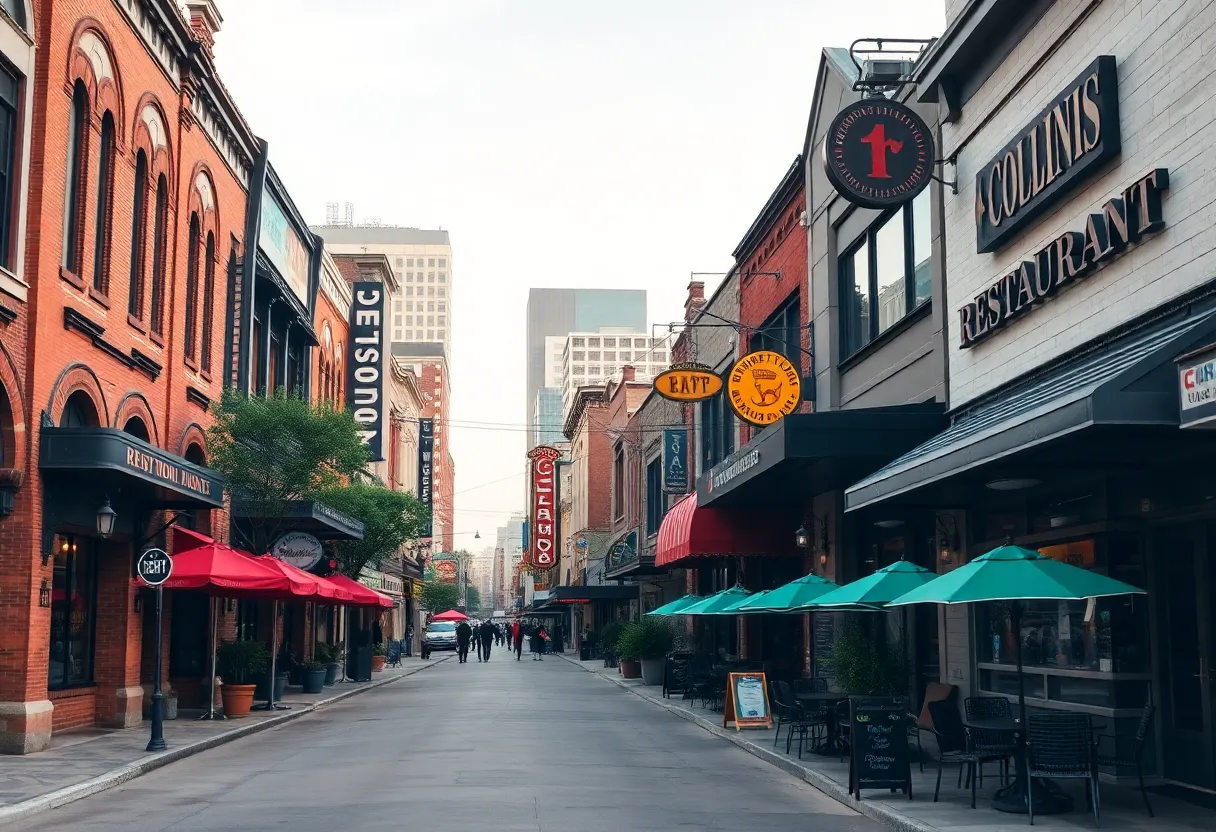News Summary
Dallas’ culinary scene faces a significant challenge due to the size of its restaurant spaces. While the city boasts numerous dining options, the trend towards larger venues is stifling creativity among chefs. Many new restaurants are part of national chains, offering little innovation. The high costs and demand for vast spaces hinder budding restaurateurs and limit unique experiences, with only a few intimate spaces available. To grow its culinary reputation, Dallas may need to rethink the scale of its dining establishments.
The Challenge of Size: How Expansive Restaurant Spaces Are Hindering Dallas’ Culinary Scene
In the heart of Texas, Dallas is known for its vibrant lifestyle, booming economy, and, of course, a restaurant scene that many hope would rival its neighbor, Houston. However, recent observations suggest that something is holding back the culinary potential of this great city. A closer examination reveals that a fundamental issue lies in the very size of the restaurants themselves.
Culinary Underperformance
Despite having numerous dining options, many Dallas restaurants fell short during the Michelin Guide’s initial review of Texas. So, what’s going wrong? Well, while Houston is capturing the attention of national foodies, Dallas seems to be lagging behind. Many of the latest new restaurant openings in Dallas are dominated by national chains, which doesn’t necessarily excite food enthusiasts seeking unique and innovative dining experiences.
The Scale Factor
One prominent issue to consider is the sheer physical size of these restaurants. It appears that many new spots are just too large! Larger venues require extensive menus to cater to the needs of 150 or more patrons on a regular basis, making risk-averse menus the name of the game. This creates a difficult environment for chefs who thrive on creativity and innovation.
Imagine trying to prepare an adventurous original dish for a crowd of 200. It’s no wonder many chefs in Dallas struggle to transition from promising newcomers to established restaurateurs. With such a huge responsibility on their hands, the opportunity for experimentation often takes a backseat.
Rising Costs and Shifting Trends
High rent prices in Dallas are no secret. However, a different conversation needs to take place regarding the size of commercial spaces being leased. The current real estate market appears to favor larger restaurant venues, a trend driven by aggressive investments from national chains. It seems that the bigger, the better – at least in the eyes of investors.
Giant Spaces and Their Consequences
Large restaurant footprints like Steam Theory at Trinity Groves (7,864 square feet) and newcomers like Evelyn and Nuri (both at 9,500 square feet) illustrate this growing trend. But that’s just the tip of the iceberg! For instance, The Mexican, a sibling restaurant to Evelyn, boasts a whopping 11,000 square feet, with an additional 4,000 square feet dedicated to patio space. The grandeur of dining experiences continues with Avra expected to open with 14,000 square feet, and The Hampton Social recently unveiling its 17,224 square feet. There are even spots like Komodo and Culinary Dropout, each occupying 22,500 square feet!
Let’s not forget the monumental failure of Circo TX, which occupied an extravagant 25,000 square feet. It’s a common thread among many failing restaurants in the area: patrons often cited that “it was too big.”
A Call for Smaller Spaces
The current landscape reveals a critical shortage of smaller, intimate spaces where budding chefs can explore and cultivate their culinary talents – akin to starter homes for aspiring restaurateurs! Most of the remaining small dining spaces in Dallas are found within historic structures. Places like New York Sub (built in 1950), Xaman Cafe (1946), and Lee Harvey’s (1945) hold a nostalgic charm, yet they remain few and far between.
Finding a Solution
It’s clear that great dining experiences might require the coziness and flexibility of smaller spaces, which could encourage creativity and risk-taking from chefs. After all, the only Michelin-starred restaurant in Dallas, Tatsu Dallas, finds its home in a historic landmark with a mere 11 seats!
In summary, the culinary scene in Dallas holds much promise, but the oversized dining venues may be getting in the way of creative growth. The challenge of size is real, and it might just be time for this city to reconsider its approach to restaurant spaces for the future of its dining experience.
Deeper Dive: News & Info About This Topic
HERE Resources
Dallas Dining Scene Shaken Up by Restaurant Closures
Big Changes Coming to Dallas’ Culinary Landscape
New Restaurants Transforming Dallas Dining Scene in April 2023
Houston Welcomes Double-Decker Tea Tours
Dallas Elections: New PACs Influence City Council Races
2025 CultureMap Tastemaker Awards Coming to Dallas
Urgent Concerns Over Tomato Trade in Texas
Dallas Weekend Roundup: Festivals, Concerts, and Culture
Dallas Unveils New Tropical Escape: Hank’s Hideaway
Chipotle Faces a Sales Slump Amid Changing Consumer Habits
Additional Resources
- D Magazine: Hear Us Out – Dallas Restaurants Are Too Big
- Google Search: Dallas restaurants
- Dallas News: 7 Classic Dallas-Fort Worth Restaurants We Love
- Encyclopedia Britannica: Dallas Texas
- NBC DFW: City Water Issues Lead to Boil Advisory in Lewisville
- Google News: Dallas restaurant news
- CBS News: North Texas Fast Food Salad and Go Raw Chicken
- Google Search: Dallas culinary scene
- Dallas Innovates: Food Waste is a Problem
- Google Scholar: Dallas restaurants

Author: STAFF HERE DALLAS WRITER
The DALLAS STAFF WRITER represents the experienced team at HEREDallas.com, your go-to source for actionable local news and information in Dallas, Dallas County, and beyond. Specializing in "news you can use," we cover essential topics like product reviews for personal and business needs, local business directories, politics, real estate trends, neighborhood insights, and state news affecting the area—with deep expertise drawn from years of dedicated reporting and strong community input, including local press releases and business updates. We deliver top reporting on high-value events such as the State Fair of Texas, Deep Ellum Arts Festival, and Dallas International Film Festival. Our coverage extends to key organizations like the Dallas Regional Chamber and United Way of Metropolitan Dallas, plus leading businesses in telecommunications, aviation, and semiconductors that power the local economy such as AT&T, Southwest Airlines, and Texas Instruments. As part of the broader HERE network, including HEREAustinTX.com, HERECollegeStation.com, HEREHouston.com, and HERESanAntonio.com, we provide comprehensive, credible insights into Texas's dynamic landscape.





